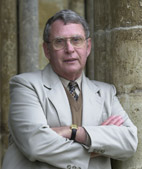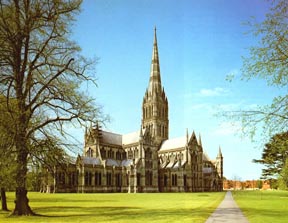
Review
of
The Gothic Enterprise
|
Reviews of The Gothic Enterprise |
The Church Times
(“The world's leading Anglican weekly newspaper,” February 4, 2004)
 |
You might think that there’s not much new to be written about Gothic cathedrals, but Professor Robert Scott’s book is fresh and original. An American professor of sociology without (he says) expert knowledge of the Church or of European history, he fell in love with Salisbury some 20 years ago, and since then has studied the how and why of the construction of these miraculous buildings.
What, he wondered, were the political and religious forces that drove kings and bishops to spend fortunes erecting these monuments of the human spirit? What skills and the technology did they need? Where did they get the manpower, the stone, the wood, the glass? What was the symbolic function of the precise proportions they used; what the theology that was the architectonic engine of the design? What drove them to such extremes of creation?
Though Professor Scott disclaims originality, what is original is the skill and elegance with which he brings together the fruits of his extensive reading, and the clarity with which he evokes the medieval mind. What did they feel about the dead, the saints, ritual, and sacred spaces?
With a simple clarity that is rare in sociology, he gives a vivid vignette of that imagined world, with its superstitions, its terrors and aspirations, and its political, ecclesiastical and financial power struggles. He covers many French cathedrals as well as English, and there is an important section on the original influence of Abbé Suger at St Denys. The book would have had to be bigger and perhaps less clear to include the Gothic glories of Italy and Spain.
I served in Salisbury for a decade, but I learned many things from this book which were new to me — such as the ingenious methods of memory-training taught in medieval monasteries, and the complex processional ritual routes taken at great festivals.
 |
Salisbury Cathedral Cloister |
As I read, I sensed a sympathetic, detached intelligence, that of an anthropologist observing mysterious customs, but unable to share the experience of the numinous at the heart of the sacred space he so vividly describes — the mysterium fascinans et tremendum, which still keeps the human race longing and seeking.
Specialists may want more, but for the general reader it is a splendid book.
- The Very Revd Hugh Dickinson, Dean Emeritus of Salisbury Cathedral